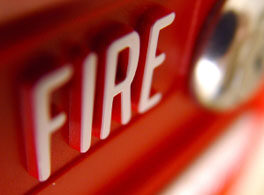Open Vs Closed Fire Alarm Protocol
One of the most important decisions that fire alarm installers make when choosing a fire alarm system for your building is whether to use an open or closed protocol system. The options given by ever-evolving fire detection technology are vast and varied, which might be bewildering for the majority of today’s businesses and property owners. You’ll get advice from a range of sources, including equipment manufacturers, system designers/installers, and facility management firms. Regardless of the reasons that any one type of system is chosen over another, there is an absolute necessity that all of its components work seamlessly in providing the rapid and dependable detection of fire. There are also other considerations for businesses and building owners which will manifest themselves further down the lifespan of the fire detection system that you need to be aware of before making an overall decision.
One of the principal considerations is the choice of protocol. The fire detection system infrastructure typically consists of a collection of devices such as smoke and heat detectors, manual call-points, interfaces and audio/visual equipment (bells, sounders, beacons or strobes) all connected via loops of cable. This cable starts and ends at the fire alarm control panel which ‘manages’ the complete system. Each device on a fire system continually transmits its data to the panel through a specific protocol – this is essentially the communication language that the manufacturers have developed for their equipment and the control panel manufacturers have adopted. There are many different protocols available, basically one per manufacturer but two distinct types – each having its advantages and disadvantages.
The advantages of an open protocol over a closed protocol fire alarm system
With an Open Protocol type system, the manufacturers of a range of devices distribute the technical details of their protocol to third parties such as control panel manufacturers and other device or component manufacturers allowing all of them to produce compatible equipment – all utilising the same protocol. Companies like Kentec Electronics, Advance Electronics, Morley, Fike work with an open protocol. The smoke detectors and peripheral equipment by the likes of Apollo fire detectors, Hochiki, CTEC, Argus, EMS, Hyfire use open protocol. Their equipment is available to all parties within the industry with no restrictions.
With a closed protocol systems a single manufacturer produces a range of devices AND control panels that all utilise its specific protocol. This manufacturer does not provide general access to the technical details of its protocol and restricts the use of it to trained approved installation companies only. Manufacturers like ADT, Gent, Protec, who not only make the equipment but then offered a maintenance package to the end-user. However, these companies restricted access to parts, software and training to either only their personnel or to fire alarm companies known as “Partners” where the partnership was a financial arrangement. This type of fire alarm system is considered within the industry as “Closed” or “Managed” protocol. Most of the closed protocols are sold to preferred partners and in some cases, companies need to spend as much as £100K per year to access their partner benefits. The main disadvantage for the client is they are trapped. They have to deal with one fire alarm company, or approved companies. Therefore, there is less competition. Less competition usually means that prices for parts and labour are higher than what is available on the open market.
However, over the years, due to the lack of compatibility and extortionate prices have proven that the closed protocol is undesirable for customers and fire alarm installation companies. The closed protocol manufactures saw a dramatic decline in the nineties and came up with another argument, which is because this is a life safety system, it prevents people who are not trained or competent from working on the system. Hence, avoid the possibility of the system not working as intended due to their incompetence. But, why not leave third party certification bodies like BAFE, NSI and SSAIB to check the competency of the installer. At the end of the day, why not give more options to the clients and companies and increase fair competition?
Before installing a fire alarm system in the United Kingdom, you must be familiar with British Standard BS5839. Being an electrician does not automatically qualify you to install a fire alarm system. Why not enrol in our Fire Alarm course to obtain third-party certification in Fire Alarm installation? We provide accredited level 3 certification in fire alarm installation. Click here for more details.
Fire alarm standards
Country |
Document |
| UK | BS 5839-1 & 6 |
| Germany | VdS 2095 |
| Netherlands | NEN2525+C1 |
| France | R7 |
| Denmark | DBI 232 |
| USA | NFPA 72 |
| Australia | AS 1670.1 |
| Middle East | NFPA 72 |
| Hong Kong | BS 5839-1 |
| European Union |
CEN/TS 54-14 |

